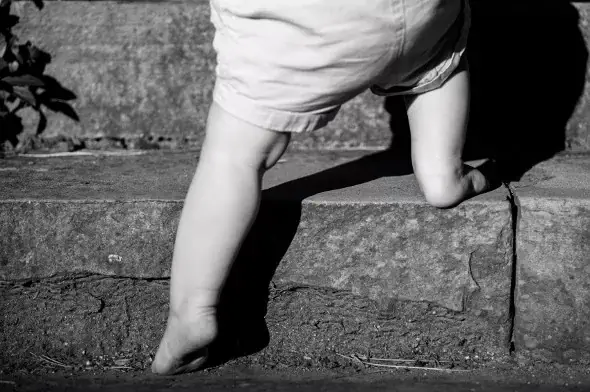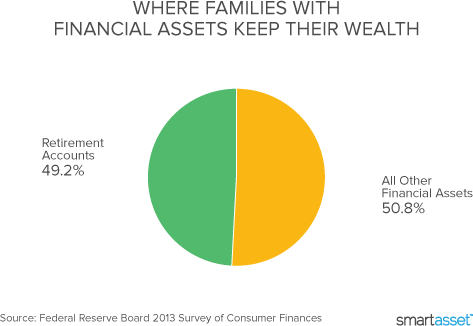By now you probably know that you want to retire at some point, and if you’re like most Americans you either haven’t saved enough for retirement or you’re worried that you haven’t. But don’t let that worry paralyze you—start saving! How, you ask? Take it one step at a time with our retirement planning guide.
Retirement Planning Basics

Let’s start with retirement baby steps. Before we even talk about how you’re going to save more money, let’s talk about free money and money you’ve already saved. That means hunting down languishing qualified retirement plans. Think 401(k) accounts from former jobs, accounts you haven’t bothered to consolidate or roll over. If you think there isn’t enough in these old accounts to justify the work of rolling them over into an IRA or the 401(k) at your new job, think again. Doing this will help you get a better handle on where you stand with retirement savings and will make it easier to monitor your progress. With retirement, every little bit helps, and the sooner you get these accounts working for you the better you’ll feel.
If your income falls on the lower end of the spectrum, take advantage of the saver’s tax credit the government offers for the first $2,000 you save each year. It’s free money—take it.
Take the employer match
Many Americans have retirement investment options through their employer. There are several types of retirement funds available to American employees. For government employees, these are usually 457 plans. For certain public school employees, employees of tax-exempt organizations and ministers, these are typically 403(b) accounts. The rest of us workers in the private sector can join 401(k) plans if they’re offered.
Max out the employer match if your retirement plan comes with one. Any retirement planning article will tell you the same thing. There are no downsides to this. It’s free money, and you’ve earned it by being such an awesome employee. If your employer-sponsored 401(k) has higher fees than your IRA, you should fund your 401(k) only up to the employer match, then put any other savings into a lower-fee investment vehicle. When choosing between retirement investment companies, always look for low fees.
Are you self-employed? That’s no excuse to skip out on retirement savings. The IRS offers what’s known as a SEP-IRA. SEP stands for Simplified Employee Pension, and it’s a way that self-employed people and business owners can set up retirement accounts for themselves and their employees. SEP-IRAs are relatively easy to set up, and have flexible rules on annual contributions, so you can save more in good years and less in lean ones.
Retirement Investments: Consider the Tax Man

So the retirement planning is moving along -you’ve rolled over old plans, you’ve funded your 401(k) up to the employer match and you still have some money you’d like to put away for retirement. Or, you want to save but you don’t have employer-sponsored options. Now what?
It’s time to choose between a traditional IRA and a Roth IRA (choose a SEP-IRA if you’re lucky enough to be your own boss). What’s the difference between an IRA and a Roth IRA? With a Roth IRA, the money you invest comes from your after-tax income. That means you won’t have to pay taxes when you withdraw from a Roth IRA in your golden years.
With a traditional IRA, your retirement funds come from pre-tax income, which makes it a little less painful to save now but means you’ll have to pay taxes when you take the money out down the road. Traditional IRAs provide tax-deferred investing, but the money you contribute will still be taxed later on, after your money has grown.
The big question to ask when deciding between these two options is this: Is my current tax bracket higher or lower than it will be when I start using this money? If you’re a freelancer living with six roommates now, chances are you’ll be in a higher tax bracket by the time you hit your 60s or 70s and withdraw from your retirement account. If that’s the case, you’re better off going with a Roth IRA. Plus, if you’re income is too high, the IRS won’t allow you to contribute to a Roth IRA, since the Roth is a vehicle designed to help people on the lower end of the income spectrum.
Another factor to consider is what your taxes will be like on your other retirement vehicles. Do you have some money from an inheritance sitting in an index fund account that you’ll pay taxes on when you start using the money? Consider a Roth IRA to diversify between taxed and non-taxed accounts. The best retirement investments complement each other.
Don’t cash out if you can help it
If you withdraw from a 401(k) or traditional IRA before you hit age 59 ½ you’ll pay for it in the form of a 10% early withdrawal penalty. There are currently eight exceptions to the 10% penalty rule, for things like needing the money to pay for medical expenses or for higher education. Unless your situation falls under one of these exceptions, leave the money in your retirement account for as long as you can. Save it and forget it. It doesn’t exist. It can’t pay for your Caribbean cruise.

Retire gracefully
When it comes to retirement planning, you want to ensure you transition to retirement like a swan landing in a lake, not a plane making a crash landing. The best retirement plans grow with you. The traditional approach has been glide path investing—also known as a target date fund. You tell the fund the date on which you want to retire, and the fund shifts to more conservative investment vehicles (i.e. from stocks to bonds) the closer you get to that date.
This approach has pros and cons. On the pro side, it automatically lowers your risk over time and aligns with our decreasing appetite for uncertainty and risk in old age. On other hand, people are living longer and longer, increasing the risk that we’ll outlive our savings. In the old days, you could get on a glide path and live off the modest returns from a conservative, bond-focused portfolio in later years because your retirement didn’t last very long. But now, with people living 25+ years in retirement, some analysts argue we need some growth built into our retirement accounts, even after we hit our 60s. Otherwise, we risk both outliving our savings and missing out on stock market gains. So on the con side, a target date fund can take seniors out of stocks and into bonds too soon.
The trade-off with owning stocks (or in investor speak, “equity allocation”) is between growth and volatility. If you keep a higher portion of your portfolio in stocks, you have more growth potential, but you also face more risk that your savings will take a nosedive when the market does. On the other hand, if by the time you hit retirement all your money is in low-yield bonds and CD’s, you’d better be darn sure you have enough money to support yourself for the rest of your life—and to keep up with inflation and cost of living increases.
How you start decumulating your retirement assets will depend on the investment vehicle you chose. If you have a traditional IRA, you’re required to start drawing it down once you turn 70 ½. This is known as the Required Minimum Distribution (RMD) rule. If you have a Roth IRA, you can keep contributing to it even after 70 ½, and you’re not subject to RMDs.
Planning for retirement involves more than just paperwork and frugality—it also involves some reflection. What are your current expenses and will they increase or decrease in retirement? Do you want a lavish retirement or a modest one? Do you want to quit work cold turkey or transition to a part-time job in retirement? How high is your risk tolerance? Think about your answers to these questions and discuss them with anyone who shares your financial fate, like a partner or dependent.
If you break retirement planning down into manageable steps, you’ll be on your way to a comfortable old age. With some saving and strategizing now, by the time you’re retired you can worry about your bingo game and not your investment portfolio.
